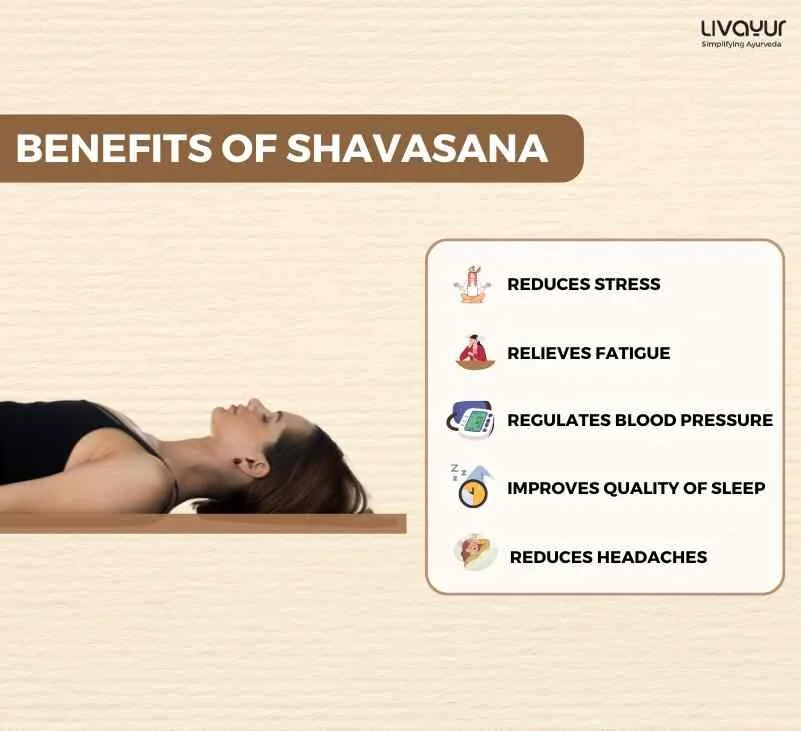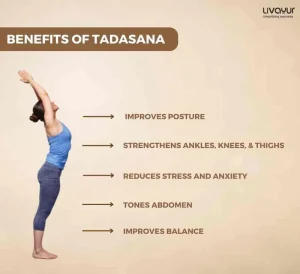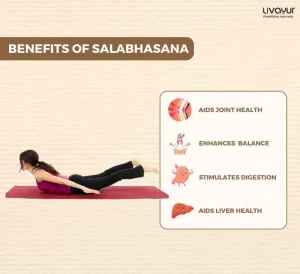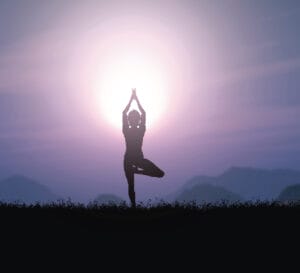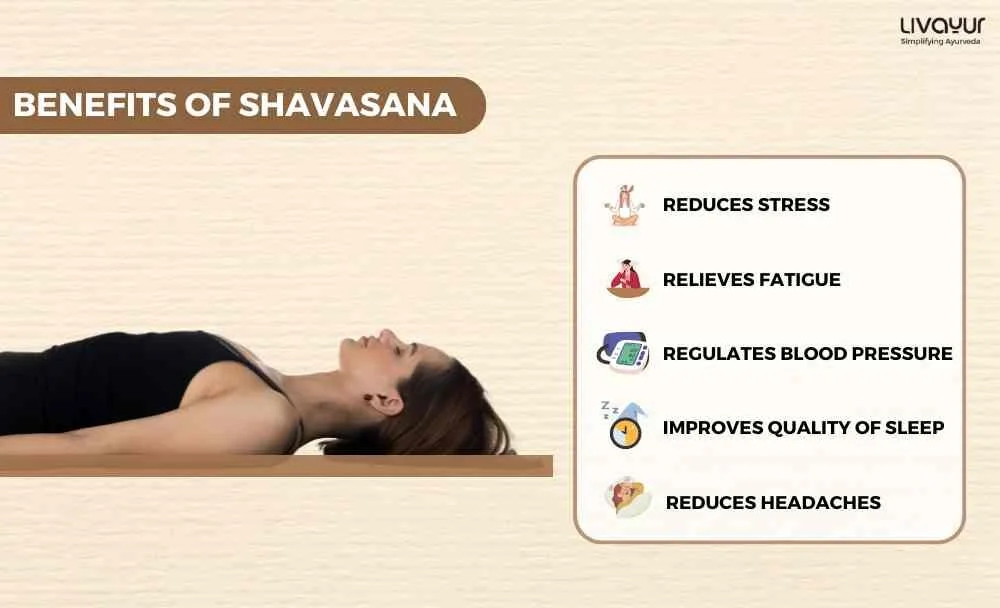
The Sanskrit term ‘shava’ means dead body while ‘asana’ means posture. Therefore is the dead body posture, which includes complete repose and absolute relaxation.[1]
It involves lying on your back with arms and legs extended and eyes closed.
Although it may appear to be a simplistic post, relaxes the individual profoundly.[1]
In this blog we will explore the benefits of Shavanasana and provide a step-by-step guide on how to perform it correctly.
Shavasana Benefits
1. Reduces Stress

A study had stress experimentally induced through a cold pressor test (CPT) and the effect was observed on cardiorespiratory parameters namely systolic blood pressure, diastolic blood pressure, pulse rate, respiratory rate, and rate pressure product.[1]
The outcome of the study suggested that individuals practicing Shavasana on a regular basis can successfully reduce the physiological effects of stress.[1]
2. Relieves fatigue
Shavasana benefits include reducing all muscle tension, improving venous circulation, toning the whole nervous system, and relieving fatigue. In addition, the heart is rested and the distribution of blood is uniform. The breathing becomes slow, deep, and rhythmic.[1]
3. Regulates blood pressure

Shavasana in conjunction with certain breathing techniques has beneficially influenced hypertension, heart ailments, and other imbalances of the body and mind.[1]
4. Improves quality of sleep
The benefit of Shavasana is one the most important in the yoga nidra practice.[1] Experimental studies have proven Shavasana to be beneficial in reducing stress and improvement of sleep quality.[2] [3]
5. Reduces headaches
Comparative studies have shown the importance of Shavasana within the yoga nidra practice to relieve tension-inducing headaches.[4]
Shavasana Procedure
Shavasana steps are rather simple to follow. However, to do it correctly, follow our step-by-step guide below:
Step 1: Begin the asana by laying on your back with your legs straight & arms relaxed at your sides.
Step 2: Let your feet fall to a natural position & rest your palms facing up. Close your eyes & breathe naturally.
Step 3: Allow your body to feel heavy on the ground.
Step 4: Begin to release each part of your body, consciously working from the soles of your feet to the crown of your head.
Step 5: To exit the pose, gently bring your awareness back to your body and start to wiggle your fingers and toes, then slowly open your eyes.
Step 6: Draw your knees in & slowly roll over to your left or right side.
Step 7: Rest there for a moment, inhale & slowly find a comfortable seated position.
FAQs
1. What is Shavasana?
The Sanskrit term ‘shava’ means dead body while ‘asana’ means posture. Therefore Shavasana is the dead body posture, which includes complete repose and absolute relaxation.[1]
It involves lying on your back with arms and legs extended and eyes closed. Although it may appear to be a simplistic post, Shavasana relaxes the individual profoundly.[1]
2. Can Shavasana be practiced at any time of the day?
Yes, Shavasana can be practiced at any time of the day. It is most effective when practiced during a stressful, anxiety-inducing situation.
3. How long should the pose be maintained?
You can stay in Shavasana for as long as you like. But it is recommended to stay in the post for at least 5 minutes for optimal benefits.
Conclusion
Shavasana is a powerful relaxation post that offers numerous benefits for the body and mind. By reducing stress, and anxiety, improving sleep quality, and regulating blood pressure and headaches, Shavasana helps promote overall health and wellness. For a calming effect on the body, incorporate this pose into your everyday routine.
Disclaimer: The information mentioned here is for educational purposes only and is not intended to be an alternative to medical treatment by a medical practitioner. Please consult a professional medical practitioner before any lifestyle modifications.
References:
- Shavasana—Relaxation technique to combat stress.
- Effect of Yogic technique Shavasana in T2DM patients on BP, blood sugar fluctuations and Sleep Quality.
- Exploring the therapeutic effects of yoga and its ability to increase quality of life.
- The Origin and Clinical Relevance of Yoga Nidra.




